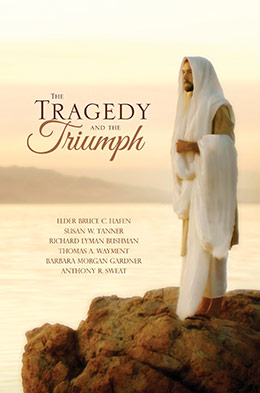Jesus Christ, Our Healer
Susan W. Tanner
Susan W. Tanner, "Jesus Christ, Our Healer," in The Tragedy and the Triumph, ed. Charles Swift (Religious Studies Center, Brigham Young University; Salt Lake City: Deseret Book, 2019), 27–48.
Susan W. Tanner was the twelfth general president of the Young Women organization of The Church of Jesus Christ of Latter-day Saints from 2002 to 2008.
When we first moved to Hawaii, almost three years ago, I was befuddled by all of the Polynesian names. It seemed they had too many syllables made up mostly of vowels. “I just need a few more consonants,” I complained. In an attempt to learn people’s names I started asking them what their name meant. They knew! And their parents were very purposeful in giving them these names that were so rich in meaning.
For instance, Kali and Kaiwa Fermantez named their six children with purpose. They hope their children will think about the people and characteristics their names represent and become like them in their lives. The oldest son is Kona’aihele, his father’s Hawaiian family name, which means “doing one’s own thing.” They want this son to learn to stand alone in righteousness when the crowd chooses to do wrong. One daughter, Ka’ena, is named for the beautiful place they lived just before she was born, and her name is a combination of the names of her two grandmas, Karen and Roena. I love their thoughtful process in giving names that will build character and identity in their children.
This is also Helaman’s pattern in the Book of Mormon. He named his sons Nephi and Lehi after “our first parents who came out of the land of Jerusalem; and this I have done that when you remember your names ye may remember them . . . [and] their works, . . . that they were good. Therefore, my sons, I would that ye should do that which is good” (Helaman 5:6–7).
Likewise, my husband and I were named for ancestors. John was named for his great-great-great-grandfather John Tanner, who joined The Church of Jesus Christ of Latter-day Saints in Joseph Smith’s era. This noble ancestor gave everything he had to save the Church from financial crisis several different times. His faith, sacrifice, and covenant keeping are spiritual attributes that John tries to emulate.
I was named after three of my maternal grandmothers who, among other things, were service-oriented, compassionate, and good cooks. Because we think it is important to have good people to emulate, John and I named our children after either ancestors or noble scriptural figures.
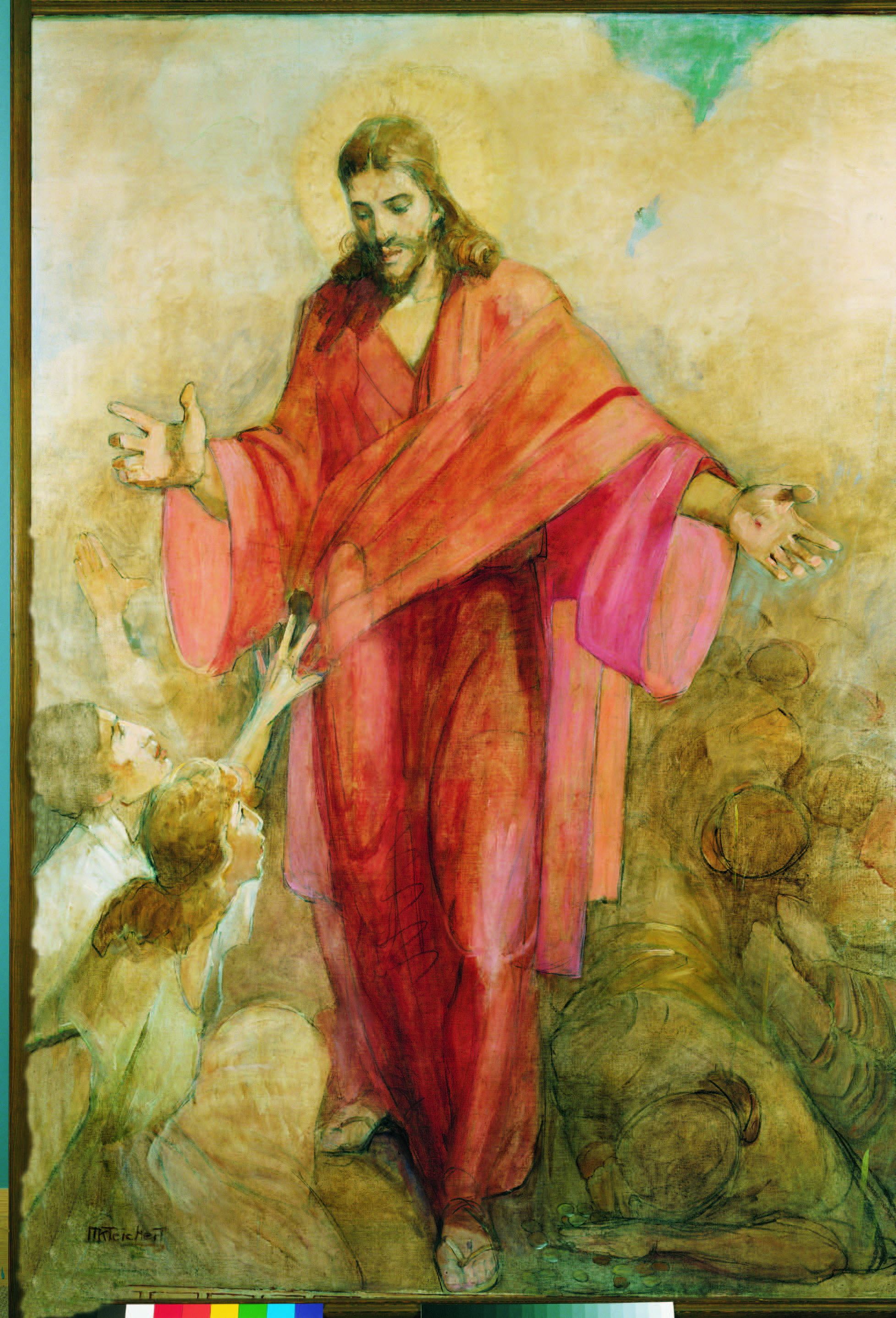 Miverva Teichert, Christ in Red Robes.
Miverva Teichert, Christ in Red Robes.
As I think about the significance of names, I remember another name, the most important name that we as covenant children of Heavenly Father take upon us, the name of Jesus Christ.
In order to learn more about Jesus Christ and as part of our study of him, both John and I memorized “The Living Christ.” In this document he is called by many names, and his works and characteristics that are enumerated suggest some of his other names.
Some of the obvious names are Jehovah, Messiah, Creator, Redeemer, Only Begotten Son, Immanuel, Savior, and King. Other names found in the document are represented in the description of his works and characteristics, like the name Son of Righteousness—from the phrase “Though sinless He was baptized to fulfill all righteousness,” or the Prince of Peace—“His gospel was a message of peace and goodwill.” The Exemplar—“He entreated all to follow His example.” The Great Healer—“He walked the roads of Palestine healing the sick.” The Master Teacher—“He taught the truths of eternity.” The Good Shepherd or a Minister—“He ministered among His other sheep in ancient America.”
I believe that Christ is the “living” Christ not only because he was resurrected, but also because he can live on in each of us as we take on his names and characteristics and yoke ourselves to him and his work through our covenants.
When my parents passed away, one of the things I mourned was the loss of living models of their great character qualities. I wanted their posterity to remember their integrity, generosity, compassion, work ethic, and other attributes as I did. And I felt responsible to carry on the Winder name by being those things myself. I wanted them to live on in me.
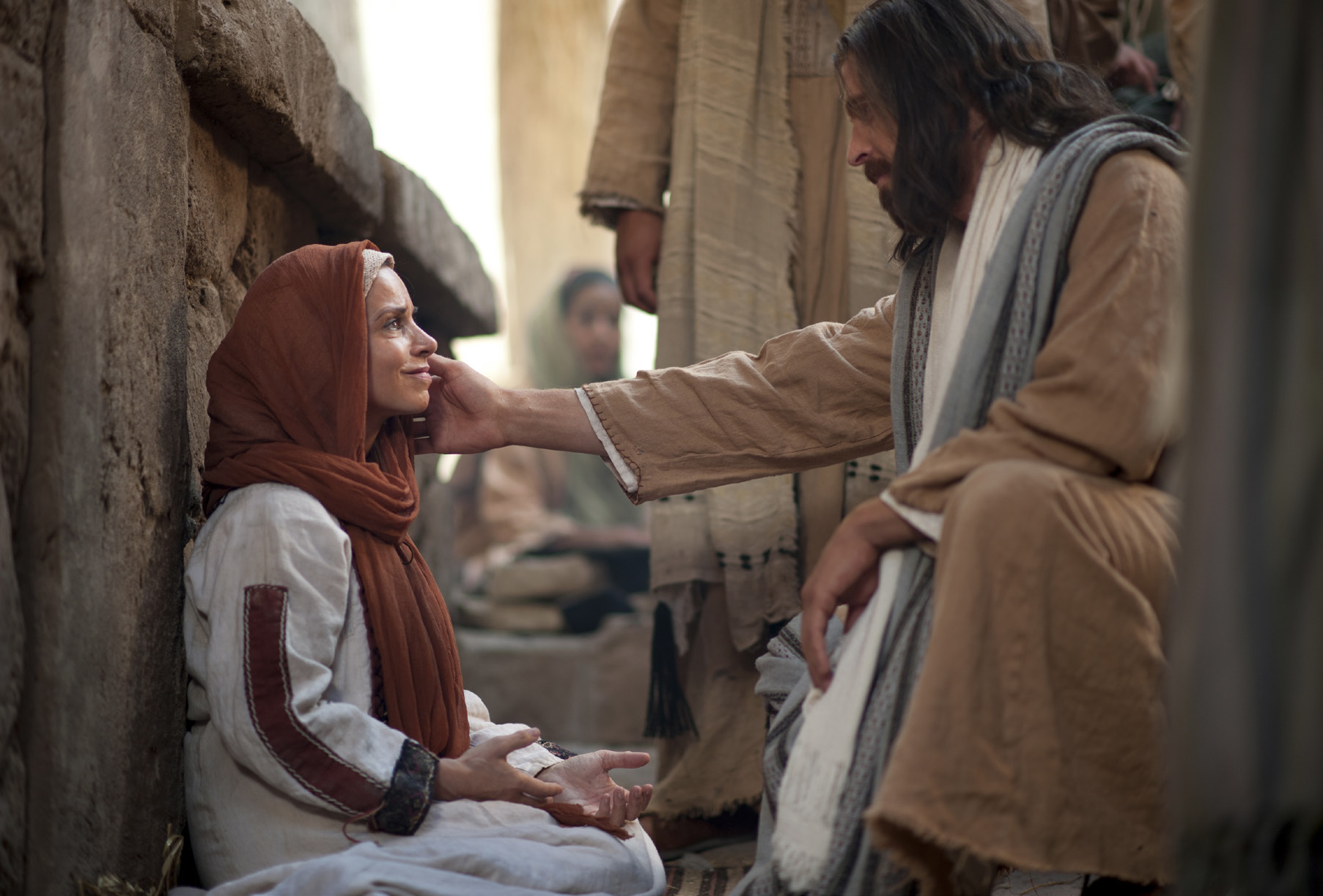 Courtesy of Matt Reier.
Courtesy of Matt Reier.
Likewise, we have a responsibility to have Christ live on in us by embodying his characteristics. Each week as we take the sacrament, we covenant to take his name upon us. What does that mean? I think it means that we take all of his names upon us: teacher, shepherd, peacemaker, healer, and so forth. As Elder Jeffrey R. Holland said, “In as many ways as possible, both figuratively and literally, we try to take upon us his identity.”[1] So now when I covenant weekly to take his name upon me, I think of his many names. I commit myself to be a shepherd, a teacher, a friend, an example, a peacemaker, a healer.
Especially a healer. I have been particularly drawn to Jesus’s name of Master Healer. It is broad in its scope and seems to me to encompass many of his other names and traits: to save, to minister, to bring peace, to redeem. Jesus provided physical healing: He “healed the sick, caused the blind to see, and raised the dead.” And he provided spiritual healing as well: having “atoned for the sins of all mankind,” he offers the healing balm of forgiveness to the “sin-sick soul” and comfort and peace in all types of affliction. I have been blessed by the Savior’s healing power, both temporally and spiritually. And I want to take the name of healer upon me so as to bless and help others.
How does he heal us and how can we act as his instruments in the work of healing? One of my favorite Primary hymns, “He Sent His Son,” teaches us the answer succinctly and clearly: “Have faith, have hope, live like His Son, help others on their way.”[2]
For us to be healed requires that we have faith and hope in him and also requires that we live like him and help others on their way. Let’s discuss these admonitions.
Have faith and have hope. For healing to occur in our lives, we must seek Christ, knowing we can turn to him in our aching, anger, or anguish, and he will understand.[3]
Jesus does understand because his walk on earth gave him earthly experiences so that he could know of our wounds, infirmities, abuse, and heartaches. There is nothing that we can suffer that he does not understand. “And he shall go forth, suffering pains and afflictions and temptations of every kind; and this that the word might be fulfilled which saith he will take upon him the pains and the sicknesses of his people. And he will take upon him death . . . and he will take upon him their infirmities, that his bowels may be filled with mercy . . . that he may know according to the flesh how to succor his people according to their infirmities” (Alma 7:11–12). We turn to him in faith knowing that because he suffered all of this he would know in each unique situation how to succor, help, and heal us.
A beautiful example of this is Jairus in the New Testament, who sought Jesus in faith, requesting that he heal his daughter. But before Jesus could come, a man came from Jairus’s house and said that it was too late; the daughter had died. Then Jesus said, “Fear not: believe only, and she shall be made whole” (Luke 8:41, 49–50; see also Mark 5:36–42).
I have a painting of this healing miracle. This artist portrays the joy of the mother and the wonder of the daughter, but notice whom the father is looking at. He is focused with great “astonishment” and gratitude on the One who has provided this great healing blessing in their lives, a physical miracle that came because of their spiritual faith in Jesus Christ, the Master Healer.
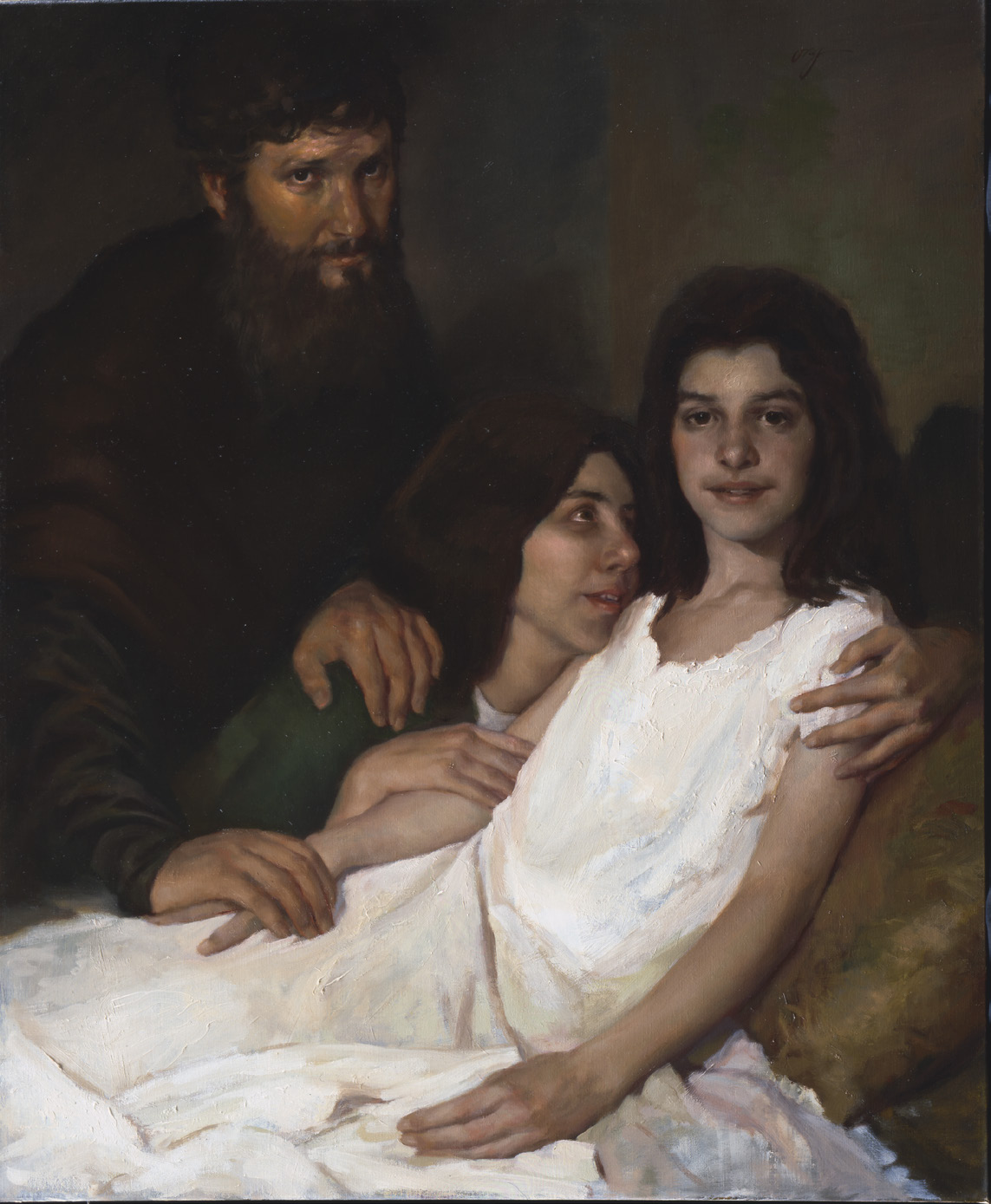 Wilson Ong, Raising the Daughter of Jairus.
Wilson Ong, Raising the Daughter of Jairus.
In this story the physical and the spiritual are intertwined. The words heal, health, whole, and holy all come from the same Old English root word, hal, meaning “intact” or “whole.” So at its root, to be healed is to be whole. The word implies not just physical health, but also holiness or spiritual health. In the gospel there is a deep connection between our righteousness and our physical well-being. The scriptures teach us that when we are converted, we are ready to be healed. “Return unto me, and repent of your sins, and be converted, that I may heal you” (3 Nephi 9:13).
Zeezrom in the Book of Mormon is another good example of how spiritual and physical health are intertwined. He had a “burning fever, which was caused by the great tribulations of his mind on account of his wickedness.” He asked Alma and Amulek to heal him. Alma asked him, “Believest thou in the power of Christ unto salvation?” And Zeezrom said, “I believe all the words that thou hast taught.” Then Alma pronounced healing upon him according to his faith. Zeezrom immediately “leaped upon his feet, and began to walk” (Alma 15:3–11). This great healing of his body was dependent upon his spiritual conversion. He was baptized and began preaching “from that time forth” (15:12). His sickness was healed and he became a holy man, all according to his faith in Christ.
So like Zeezrom, we too can be healed through exerting faith and hope in Jesus Christ. We all have the need to be healed, and his grand mission is to heal us—to make us whole physically and spiritually.
How can we participate in that mission? How can we “learn the healer’s art”?[4] How can we “live like His Son, help others on their way”?
As we take the name of Christ the Healer upon us, we try to teach others to rely upon him in faith as we have had to do in our own healing miracles. And we also strive to give his love, understanding, and compassion to those we are helping. It is our covenant obligation, our duty, to minister and heal after his pattern. In our effort to offer faith, hope, and charity to others, he promises to be yoked with us, and to help us fulfill our covenant by granting the Spirit always to be with us.
President Gordon B. Hinckley taught:
[This Church’s] . . . head is the Lord Jesus Christ, whose name each of us has taken upon ourselves. . . . We are here to assist our Father in His work. . . . All of us in the pursuit of our duty touch the lives of others. . . . The Lord has said: “Wherefore, be faithful; stand in the office which I have appointed unto you; succor the weak, lift up the hands which hang down, and strengthen the feeble knees” (D&C 81:5) . . . What is really important is that this is the work of the Master. Our work is to go about doing good as did He.[5]
If we love him, we will feed his sheep, as he emphatically admonished Peter three times (see John 21:15–17).
President Spencer W. Kimball made a similar point when he said, “God does notice us, and he watches over us. But it is usually through another person that he meets our needs.”[6] I would like to be one of those people who is an instrument of healing for others. One of my favorite verses in the hymn “Lord, I Would Follow Thee” says:
I would be my brother’s keeper.
I would learn the healer’s art.
To the wounded and the weary
I would show a gentle heart.
I would be my brother’s keeper.
Lord, I would follow thee.
The opportunities to learn “the healer’s art”—“to feed his sheep,” to serve, to minister, to love, to heal—abound. Loved ones, family members, classmates, ward members, roommates, even strangers, or adversaries may be suffering from some grief or wound or sin. We, in our sensitivity and by following the Spirit, should love them and help them increase in faith, in hope, in holiness—becoming whole.
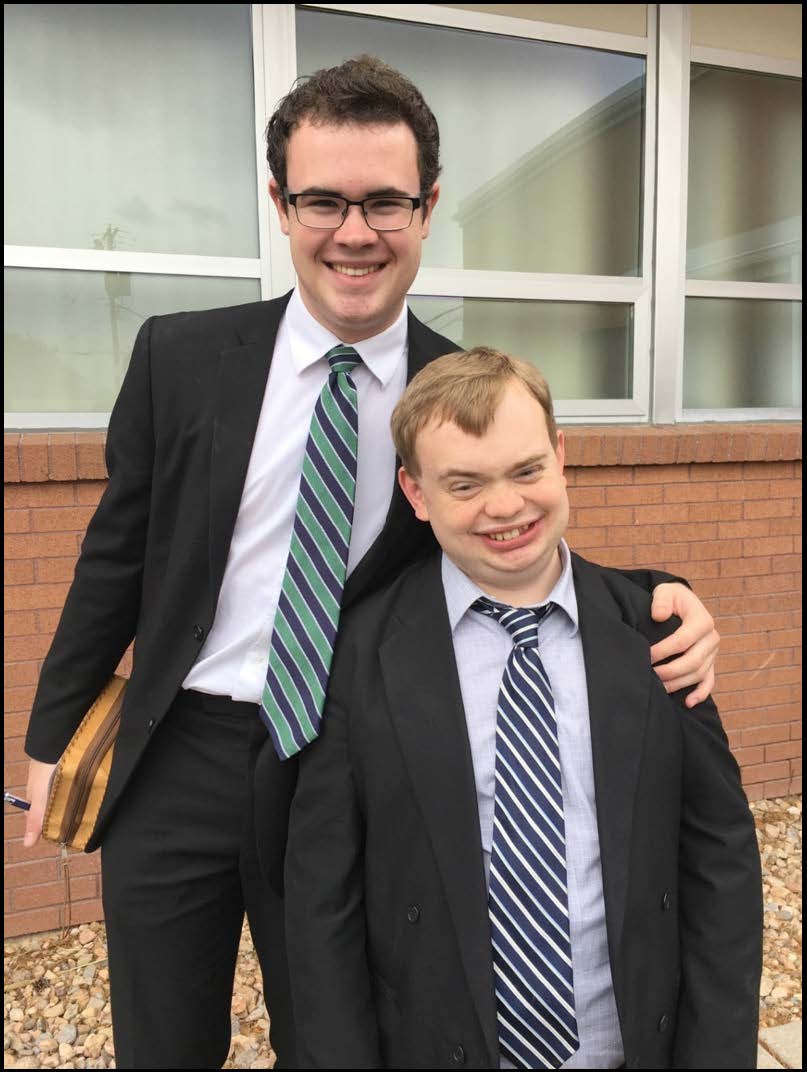 Tanner and Alex. Courtesy of
Tanner and Alex. Courtesy of
Susan Tanner.
Last May our oldest grandson, Tanner, graduated from high school. During those years he had the opportunity to participate in the special needs seminary class. He was assigned to work specifically with Alex, who had both mental and physical disabilities. Every day he would walk with Alex from the high school to the seminary building and then be his friend in the classroom as well. It just so happened that Alex and Tanner were also both in the same ward.
At the end of the school year all the graduating seniors spoke in a special sacrament meeting. Alex had been preparing his talk for weeks and was the first on the program to speak. When he stood at the pulpit, he was absolutely paralyzed and could say nothing. Finally, his mother stood beside him, but she couldn’t get him to talk either.
As the situation became more desperate, Tanner felt impressed to go to the pulpit. He put his arm around Alex and read the first line of his talk. Then Alex repeated it. They then continued this pattern, until Alex successfully delivered his message. The trust they had built during that school year paid dividends in that meeting.
When it was Tanner’s turn to speak, he said, “Today I want to tell you about the seminary steps.” His talk went something like this:
Every day I walked Alex up the steps to the seminary building. One day he fell and hurt himself. He was so discouraged that he just sat on the stairs and said he couldn’t go on. I urged him and nudged him and encouraged him, telling him that I would help him make it up those steps and that it would be worth it because of all the fun things the teacher had prepared for us in class that day. Finally, I got him to class. The next day the same thing happened, and I had to encourage and help him all over again. And there were many subsequent days that he sat on the stairs fearful that he would stumble and hurt himself again. But he learned to walk with more courage, and we made it, day by day. Now we are graduating and moving on to new things.
Then Tanner continued,
Today I feel somewhat like Alex on those seminary steps. In my heart I feel scared to go on. I’ve come from many good experiences at the high school and made it through challenging classes. Now I have some steps to climb to get to the next level, to go to college, to serve a mission, to be ordained to the Melchizedek Priesthood, etc. I need courage; I need help. Sometimes I don’t know how I am going to do it. But then I remember that I have parents, family, friends, leaders, bishops, many people who will be there to urge and encourage me on. And especially I will have a loving Heavenly Father and power from his Son Jesus Christ that will strengthen me and help me climb every step of the way.
Tanner had been a healer in Alex’s life, and he also sought healing through faith and hope in Jesus Christ. Each of us can be like Tanner. We can help those around us to walk with greater courage. And we can be humble enough to seek the healing, helping gifts of Jesus Christ and his instruments in our own need.
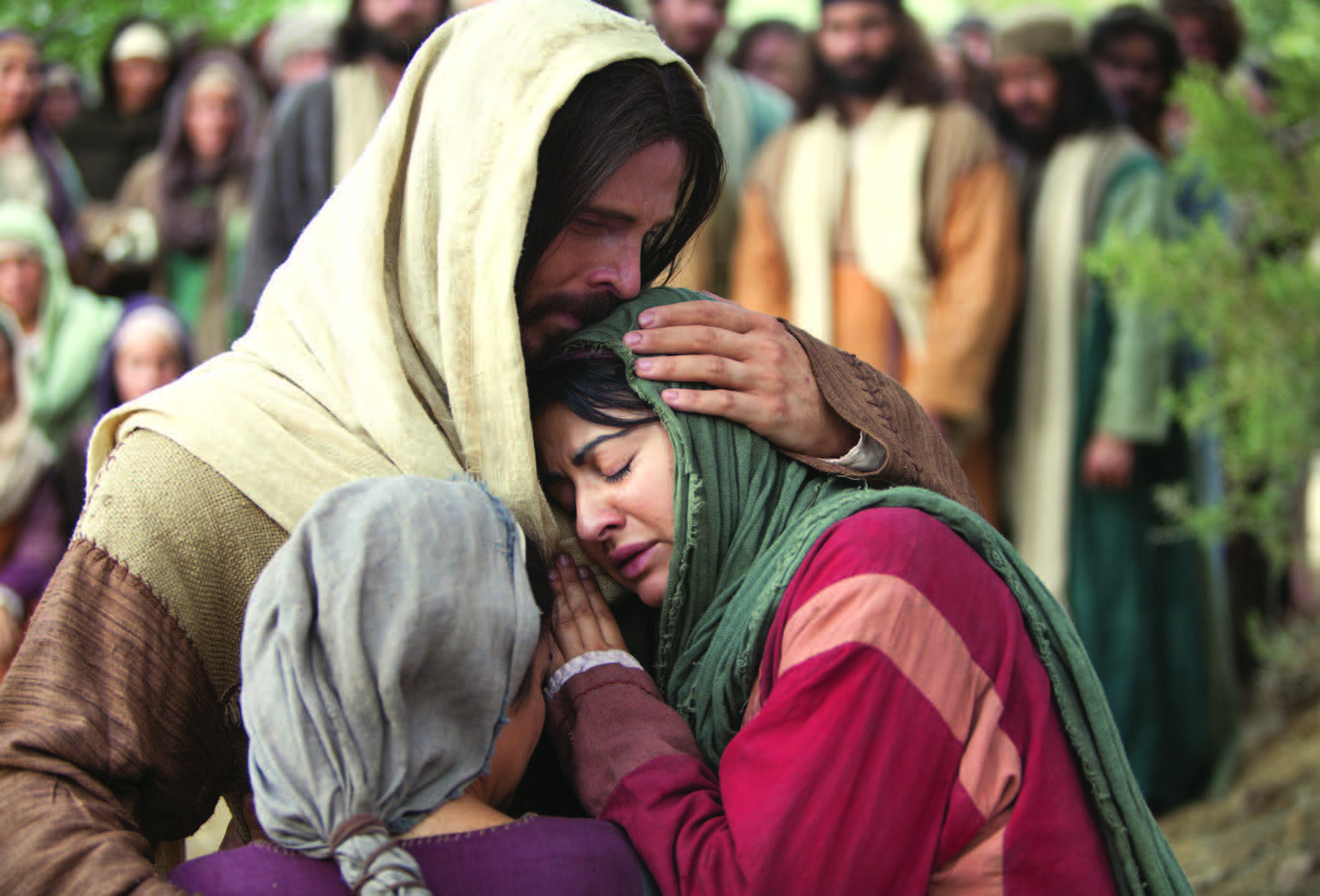 Sara Carabine Jenson, Jesus Comforts Mary and Martha.
Sara Carabine Jenson, Jesus Comforts Mary and Martha.
Now I will conclude in praise of those who most nearly model the Savior’s healing gifts. No one is in a better position to heal than parents in a home—especially mothers. They have the opportunity and responsibility to take the name of Jesus Christ upon them, the name of Healer, and help their loved ones work with their challenges, providing a measure of peace and comfort and an opportunity for growth and progress. Parents honor the covenant that they have made by yoking themselves with Christ in his work, in his way, with perfect love and compassion. I watch many wonderful parents constantly heal, comfort, strengthen, teach, minister, bless, provide hope.
I have a friend who is bringing back her gay son to the family circle by her availability for conversations, her nonjudgmental attitude, and her loving outstretched arms. He continues to have challenges, but he has found a saving lifeline in his mother’s listening heart and a place of refuge in his family. She is a healer.
Another mother I know is helping her son through feelings of anxiety, depression, and low self-worth. The boy is faithful. No one would guess the things he suffers. As a favorite hymn suggests, “In the quiet heart is hidden sorrow that the eye can’t see.” Bishops have helped him; therapists have helped. But the compassion and guidance of his mom is paramount in his ongoing healing. Sometimes all she can offer him is her listening ear, loving heart, and eternal hope in Jesus Christ. She too, is a healer, for just as the Primary song admonishes, she is helping him to “have hope.”
Isn’t that what Jesus does for us? Sometimes when we don’t know how to face our storms, we drop to our knees in prayer, knowing that he is listening and understanding. As the 2018 Mutual theme song says:
He gives us hope when hope is gone.
He gives us strength when we can’t go on.
He gives us shelter in the storms of life.
When there’s no peace on earth, there is peace in Christ.[7]
He, himself, promised us peace: “Peace I leave with you, my peace I give unto you: not as the world giveth, give I unto you. Let not your heart be troubled, neither let it be afraid” (John 14:27).
Selfless, Christlike mothers and fathers teach their children the healing power that comes through hope in his Atonement. Like Nehemiah said when he was building a great wall of protection for his people: “I am doing a great work, so that I cannot come down” (Nehemiah 6:3). I offer my affirmation to you parents for the great work you are doing. You are healers. You must not be tempted away from your holy healing mission.
Now, from my personal experience, I am learning that healing in this life is not always about a one-time “cure,” but about a healing journey. I am still in the midst of such a journey. As my husband so aptly stated:
It is difficult to trust in the Lord’s hidden providence, especially when things are going badly, as they did that first winter for the pilgrims, which is remembered in history as “the starving time.” Their pilgrimage, as ours, unfolded in a history whose providential design was difficult to discern at the time. Providence is sometimes hidden to pilgrims who must make their way in medias res (“in the midst of things”) on an epic journey home called mortality. The hand of Providence often reveals itself retrospectively rather than prospectively to pilgrims. . . . As pilgrims, we journey into the future, hopeful that in the fullness of time, we shall understand how it was that “from the beginning, the fight we were winning.”[8]
In our family we are in the middle of a difficult healing journey. We received life-changing news this year that alters every activity henceforth and even changes the lens with which we view life. About ten months ago, our three-year-old grandson Jack was diagnosed with a rare chromosomal deletion called Phelan-McDermid Syndrome. Among many other symptoms, this syndrome causes absence of speech or severely delayed speech. He is three now and not talking much.
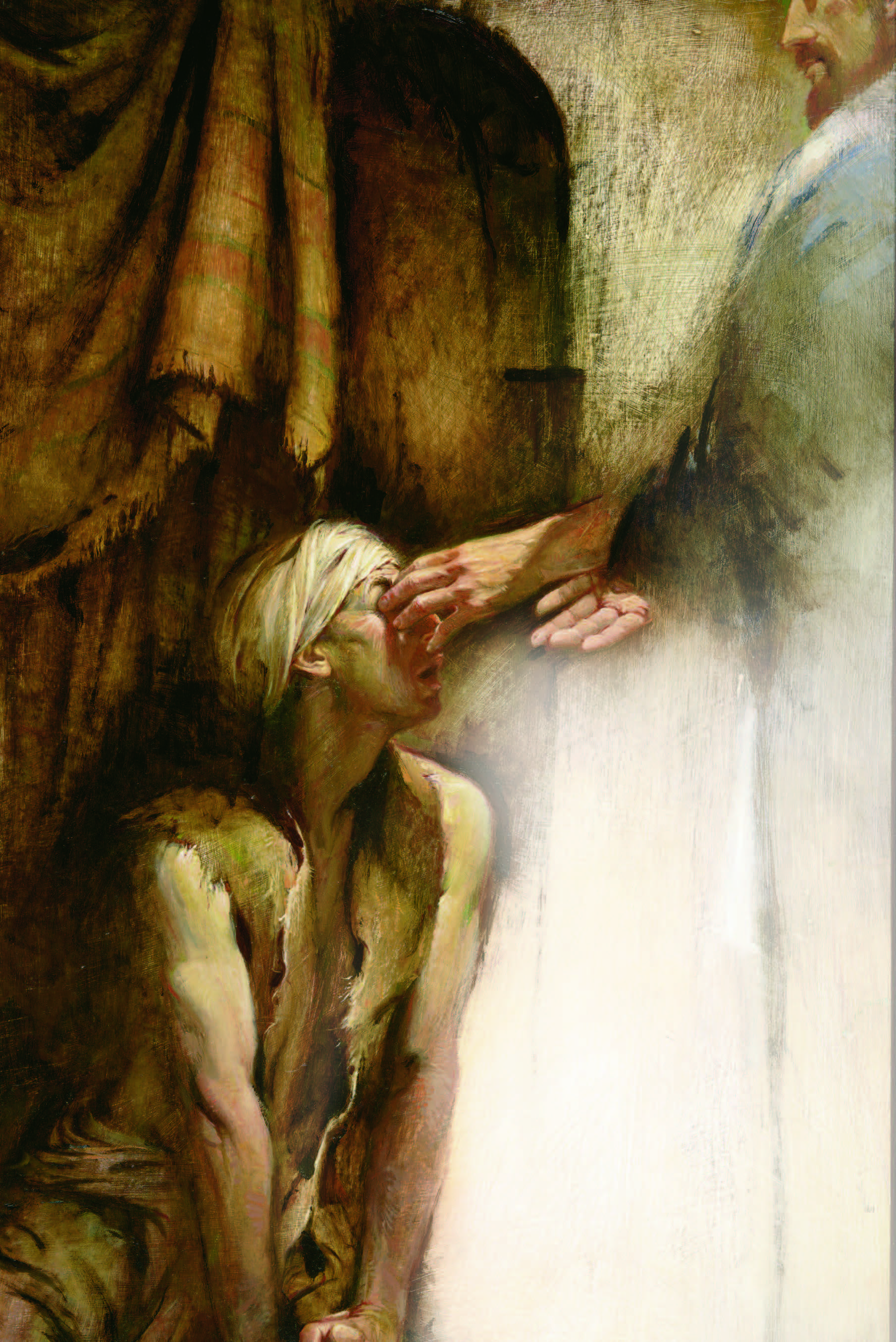 Walter Rane, He Anointed the Eyes of the Blind Man.
Walter Rane, He Anointed the Eyes of the Blind Man.
Our daughter has cried and suffered much. She is trying to do everything professionals and loved ones suggest, but no one knows exactly what will help him. Many times she has said to me, “No one understands Jack; no one understands my life. I feel so alone, so isolated.” I absolutely believe her and feel these things with her.
But she and I are trying to exert our faith and hope in the Savior as our Healer. As we have sought for the healing hand of the Lord, we have recognized his love in small mercies and miracles on this new journey.
For example, when this daughter and her husband first accepted a job in the Dallas area, I had the overwhelming impression it was for Jack, even though he had not yet been diagnosed with this syndrome. In Texas they have found and visited with a neurologist who “amazingly” studies nothing but this rare, relatively newly discovered Phelan-McDermid syndrome. Also, “amazingly,” the national family support group for this syndrome is having their annual conference this year in Dallas for the first time ever, right near their home, so they will be able to attend. The behavioral therapist who was assigned to work with Jack in weekly home visits “just so happens” to have a daughter who has Phelan-McDermid syndrome. Even though her daughter’s symptoms vary from Jack’s, she is an understanding, compassionate, listening angel with positive suggestions for help. She is an instrument in the healing process.
 Courtesy of Randy Collier.
Courtesy of Randy Collier.
Aside from these clinical mercies, I have felt tender healing happening in our hearts. Jack’s personality is so sweet and friendly. Each member of our extended family has fasted and prayed much for Jack, and each one feels such great love for him and is so bonded with him. We exult in any effort he makes or any success he has in communicating. I am sure he has special purposes for being sent to our family, in teaching us about faith, endurance, and God’s perfect love. Maybe “to the wounded and the weary,” our family will “show a [more] gentle heart.” Maybe each of us will be healed of our worldliness as we bask more in the goodness of Jack’s pure spirit. As we give to him, we are blessed. And as we seek healing for him, perhaps we are growing in our faith in Christ. Perhaps we are receiving a type of healing from him in our own imperfect hearts. Also our daughter has always had such great capacity to love, but now this gift is growing and extending beyond all bounds.
Jack’s infirmity is healing us as a family. This experience is giving us the opportunity to exercise our faith and hope in Christ to heal us. And it is helping us develop his compassion and charity to “help others on their way.”
No one in this life is spared from affliction. But as Elder Orson F. Whitney said:
No pain that we suffer . . . is wasted. It ministers to our education, to the development of . . . patience, faith, fortitude and humility. All that we suffer, . . . especially when we endure it patiently, builds up our characters, purifies our hearts, expands our souls, and makes us more tender and charitable, more worthy to be called the children of God . . . and it is through sorrow and suffering, toil and tribulation, that we gain the education that we [came] here to acquire and which will make us more like our Father and Mother in heaven.[9]
To grow, to be strengthened, to be healed, requires all the faith we can muster in Jesus Christ. To take the name of Healer upon us requires that we acquire his love and charity for others.
President Russell M. Nelson describes the mammoth effort it is to exercise our faith in him, so as to draw his power into our lives.
When you reach up for the Lord’s power in your life with the same intensity that a drowning person has when grasping and gasping for air, power from Jesus Christ will be yours. When the Savior knows you truly want to reach up to Him—when He can feel that the greatest desire of your heart is to draw his power into your life—you will be led by the Holy Ghost to know exactly what you should do.[10]
With his power we will be healed. With his power we will be instruments in healing others. I testify that Jesus Christ is the Master Healer, our Savior, our Redeemer. I am grateful for his healing power, ministering hand, and perfect love now and for eternity. I love him.
May we “have faith, have hope, live like His Son, help others on their way.” May we take his name and names upon us as we yoke ourselves by covenant to Jesus Christ, our Healer.
Notes
[1] Jeffrey R. Holland, “Come unto Me” (Brigham Young University devotional, 2 March 1997), 2, speeches.byu.edu.
[2] Mabel Jones Gabbott, “He Sent His Son,” Children’s Songbook (Salt Lake City: The Church of Jesus Christ of Latter-day Saints, 1987), 34.
[3] See Emma Lou Thayne, “Where Can I Turn for Peace?,” Hymns (Salt Lake City: The Church of Jesus Christ of Latter-day Saints, 1985), no. 129.
[4] Susan Evans McCloud, “Lord, I Would Follow Thee,” Hymns, no. 220.
[5] Gordon B. Hinckley, “This Is the Work of the Master,” Ensign, May 1995, 71.
[6] Teachings of Presidents of the Church: Spencer W. Kimball (Salt Lake City: Deseret Book, 2006), 82.
[7] “Peace in Christ,” New Era, January 2018, 243–25.
[8] John S. Tanner, Notes from an Amateur (Provo, UT: Religious Studies Center; Salt Lake City: Deseret Book, 2011), 127–28.
[9] Quoted in Spencer W. Kimball, Faith Precedes the Miracle (Salt Lake City: Deseret Book, 1972), 98.
[10] Russell M. Nelson, “Drawing the Power of Jesus Christ into Our Lives,” Ensign, May 2017, 42.
